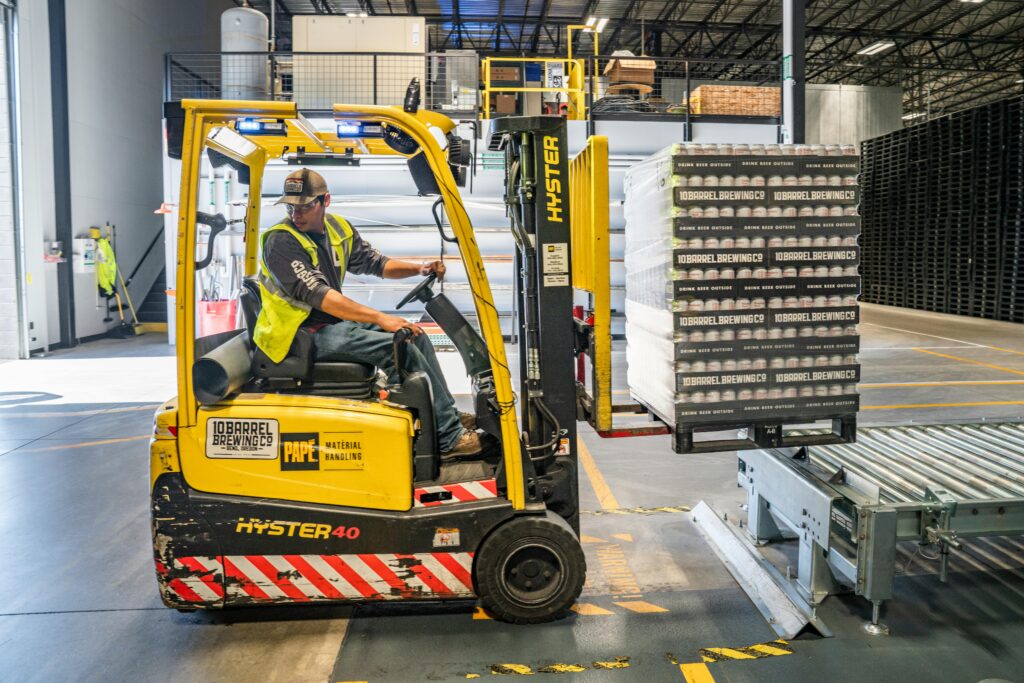
In today’s fast-paced corporate environment, efficient warehouse operations are essential for maintaining a competitive edge. Every aspect of warehouse operations, from order fulfillment to inventory management, is essential to satisfying client needs and optimizing revenue. There are four expert tactics discussed in this article that will help improve warehouse operations and drive corporate success.
1. Embrace Automation: Leveraging Technology for Streamlined Processes
Automation has revolutionized warehouse operations, offering opportunities to improve efficiency, accuracy, and speed. Conveyor belts, robotic pickers, and automated guided vehicles (AGVs) are examples of automated technologies that can be integrated to reduce manual labor, minimize errors, and speed up order fulfillment.
Implementing Robotics: Enhancing Efficiency and Accuracy
Robotics play a pivotal role in warehouse automation, performing tasks such as picking, packing, and palletizing with precision and speed. The real-time tracking and optimization of inventory are made possible by the seamless integration of these robotic technologies with the current warehouse management systems. Robotics can help your warehouse run more efficiently by lowering cycle times, increasing throughput, and improving overall operational efficiency.
Utilizing Manufacturing Software: Optimizing Workflow Management
Manufacturing software solutions offer comprehensive tools for optimizing warehouse operations, from inventory management and order processing to scheduling and resource allocation. These software systems use sophisticated algorithms and data analytics to find bottlenecks, improve workflow management, and support data-driven decision-making. By utilizing manufacturing software, you can boost efficiency, achieve higher operational agility, and obtain useful information about your warehouse operations.
2. Prioritize Layout Optimization: Designing Efficient Storage Solutions
The layout of your warehouse plays a crucial role in determining efficiency, accessibility, and throughput. By creating a well-planned layout that maximizes available space and reduces travel time, you can enhance efficiency and productivity.
Implementing Lean Principles: Minimizing Waste and Redundancy
Lean principles emphasize eliminating waste and optimizing processes to achieve maximum efficiency. Lean techniques can improve material flow, limit needless movement, and lower the amount of storage space needed for warehouse layout design. To simplify processes, this strategy analyzes workflows, finds inefficiencies, and implements continuous improvement projects.
Utilizing Vertical Space: Maximizing Storage Capacity
Incorporating vertical storage solutions such as pallet racking systems and mezzanine levels allows you to maximize available space and increase storage capacity. By making good use of vertical space, you can reduce clutter, increase accessibility, and enhance inventory management. Furthermore, improved product organization and classification made possible by vertical storage systems speed up retrieval and replenishment operations.
3. Enhance Inventory Management: Achieving Accuracy and Transparency
Effective inventory management is essential for maintaining optimal stock levels, minimizing carrying costs, and meeting customer demand. By implementing robust inventory management practices and leveraging technology, you can achieve greater accuracy, visibility, and control over your inventory.
Implementing Barcode and RFID Technology: Improving Traceability
Barcode and radio-frequency identification (RFID) technology provide efficient methods for tracking inventory throughout the warehouse. Products can be reliably tracked in real-time for stock levels, locations, and movements through the use of barcode labels or RFID tags. This technology makes faster inventory counts, fewer human data input errors, and improved supply chain traceability possible.
Utilizing Demand Forecasting: Anticipating Customer Needs
Demand forecasting involves analyzing historical data, market trends, and customer preferences to predict future demand for products. Utilizing predictive analytics and forecasting algorithms, you can foresee changes in demand, modify inventory levels appropriately, and enhance replenishment tactics. Proactive inventory management minimizes stockouts, cuts down on surplus inventory, and boosts client satisfaction.
4. Invest in Employee Training: Empowering Your Workforce for Success
Your warehouse staff plays a critical role in ensuring smooth operations and maintaining productivity levels. By investing in training and development initiatives, you can provide your employees with the abilities and knowledge required to succeed in their positions.
Providing Cross-Training Opportunities: Building Versatile Skill Sets
Cross-training your staff on different jobs and procedures in the warehouse improves their adaptability and resilience. Equip employees with a variety of skill sets, and you can lessen the effects of absences, workload variations, and requirements changes. Employees with cross-training are more equipped to adjust to shifting conditions, cover gaps when necessary, and improve overall operational effectiveness.
Promoting Safety Awareness: Creating a Culture of Workplace Safety
Safety should be a top priority in any warehouse environment to protect employees from accidents and injuries. Thorough safety training programs and encouraging staff members to be mindful of their surroundings may establish a culture of safety and responsibility. By providing proper training on equipment operation, ergonomic practices, and hazard identification, you can minimize workplace incidents, reduce downtime, and safeguard employee well-being.
Conclusion
In conclusion, optimizing warehouse operations requires a strategic approach that combines technology, layout optimization, inventory management, and employee empowerment. By using automation, emphasizing layout optimization, improving inventory management techniques, and training employees, you can optimize workflows, boost output, and set up your warehouse for success in the current competitive environment.


